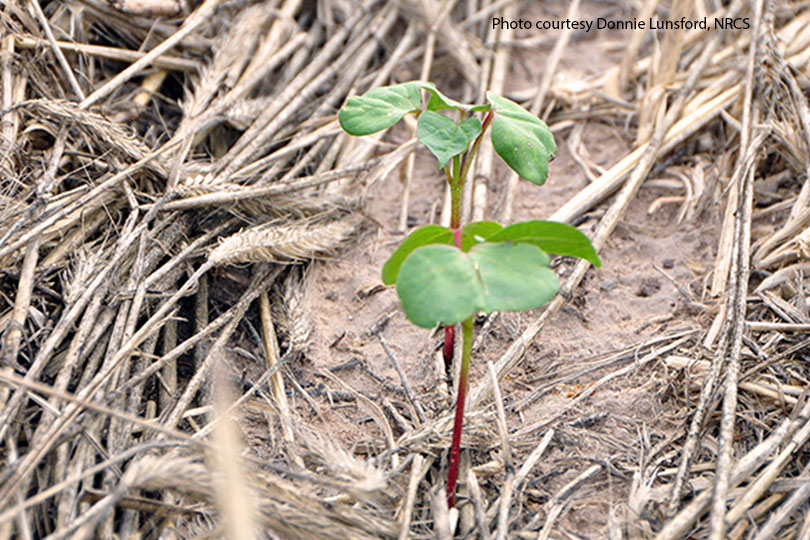By Emmy Powell
Communications Specialist
The latest Census of Agriculture shows Texas farmers continued adopting on-farm conservation practices.
Those conservation practices include no-till, conservation or reduced tillage and cover crops.
“These climate-smart farming practices enhance soil health, which increases a farm’s resiliency and productivity,” Brant Wilbourn, Texas Farm Bureau associate director of Commodity and Regulatory Activities, said. “It also highlights farmers’ commitment to sustainability and to caring for the land and natural resources.”
Census data shows over 13,100 farms covering more than 2.9 million acres are implementing no-till practices. That’s a 56.9% increase from the previous census in 2017.
In no-till farming, farmers do not till their land before planting, minimizing soil disturbance. No-till can minimize wind and water erosion and protect the soil from high temperatures and moisture loss, according to the U.S. Department of Agriculture (USDA).
The census also shows a 43.7% increase in farms practicing conservation or reduced tillage methods. Over 10,000 farms covering more than 5.5 million acres use these methods.
USDA notes farms practicing conservation tillage leave at least 30% of plant residue on the field after harvest.
The censes reports a 9.5% increase in farms utilizing cover crops. In Texas, over 8,000 farms spanning more than 1.5 million acres have added cover crops.
A cover crop and crop rotation can help improve soil health and prevent erosion. Cover crops can also serve as a forage option for livestock, and rotating crops have been a common practice for farmers for decades.
“Farmers will implement a variety of conservation practices depending on the farm’s location and the crops being grown,” Wilbourn said. “Farmers also utilize technology to help them be more sustainable and efficient.”
Meet a farming family who’s been no-till farming for nearly 10 years.


Leave A Comment